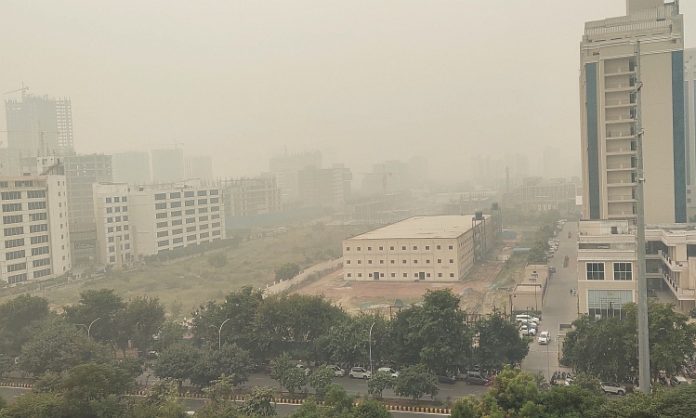New Delhi: Air quality of Delhi continues to remain in ‘severe’ category despite enforcement of the rigorous graded response action plan (GRAP-4). As the air quality index (AQI) fails to improve, the state government has decided to go in for artificial rains to lower the concentration of pollutants, officials said.
The national capital woke up to toxic smog on Thursday. According to the data released by the System of Air Quality Forecasting and Research (SAFAR-India), AQI in Anand Vihar was recorded at 432 (severe category), while RK Puram area the AQI stood at 453 (severe category). Punjab Bagh also recorded at AQI of 444 (severe) and ITO stands at 441 (severe category).
Also Read: Delhi-NCR authorities invoke GRAP-II stage, as AQI turns very bad
“We are battling with worst kind of air pollution. We are experiencing a burning sensation in our eyes, while those of old age are facing breathing troubles,” said resident near Connaught Place.
Supreme Court asks farmers to stop stubble burning
A couple of days ago, the Supreme Court had expressed serious concern over prevalence hazardous air quality in the national capital and asked the farmers of Punjab, Haryana, and western Uttar Pradesh to stay away from stubble burning immediately. Stubble burning in the vicinity is said to be a major cause of air pollution.
Action plans to deal with toxic air
The Delhi government has already enforced the 8-point action plan, which includes ban on entry of truck traffic into Delhi (except for trucks carrying essential commodities/ providing essential services and all LNG/ CNG/ electric trucks). The district administrations of Noida and Ghaziabad have ordered discontinuance of all physical classes in schools till Friday in view of the worsening air quality. Schools have been told to conduct classes in online mode.
Also Read: Bengaluru breathes toxic air, 5 times worse than WHO limit: Report
Why air pollution in Delhi so high?
Air pollution levels can be high during the winter months for a number of reasons, including dust and vehicular pollution, dry-cold weather, stubble burning, burning crop residues after the harvest season, and commuting.
Cold air is denser and moves slower than warm air, so it traps pollution and doesn’t whisk it away. This means that air pollution in winter remains in place for much longer than during the summer. According to doctors, for any healthy person, a recommended AQI should be less than 50, but these days the AQI has spiked beyond 400, which could prove fatal for those suffering from lung-related diseases and even pose a risk of lung cancer.
Artificial rains planned on Nov 20-21 to tackle song
The Delhi government is a spell of artificial rain in the capital city on November 20-21 to improve the air quality for the people, who are gasping over the past one week. Delhi environment minister Gopal Rai and finance minister Atishi held a meeting with a team from IIT Kanpur, which proposed that a spell of artificial rain may help amid the air emergency in the national capital.
Also Read: File reply on Bihar’s air pollution in 3 weeks: Patna HC tells BSPCB
Officials said that the Delhi government would prepare the artificial rainfall plans in consultation with the IIT team and submit it to the Supreme Court on Friday. The court is hearing a bunch of petitions seeking urgent steps to address Delhi’s toxic air days. The state government will go ahead with plan for artificial rains if approved by the apex court.
IIT Kanpur conducted successful trial of artificial rains
To address this issue, the Indian Institute of Technology (IIT) Kanpur has proposed the idea of “artificial rain” to reduce pollution levels in the national capital. This project has been in development since 2018, and the institute conducted trials in July of this year. The researchers have secured the necessary permissions from government authorities, including the Directorate General of Civil Aviation (DGCA), to carry out cloud seeding for this purpose.
Also Read: IIT Kanpur conducts successful trial of cloud seeding, artificial rain
What is cloud seeding?
Cloud seeding is an artificial method used to increase rainfall by introducing certain substances into clouds that serves various purposes, including reducing the impact of droughts, preventing forest fires, increasing precipitation, and enhancing air quality. During cloud seeding, chemicals like silver iodide, potassium iodide, and dry ice are released into the sky using airplanes and helicopters. These chemicals attract water vapour, leading to the formation of rain clouds. It usually takes about half an hour for this method to make it rain.




